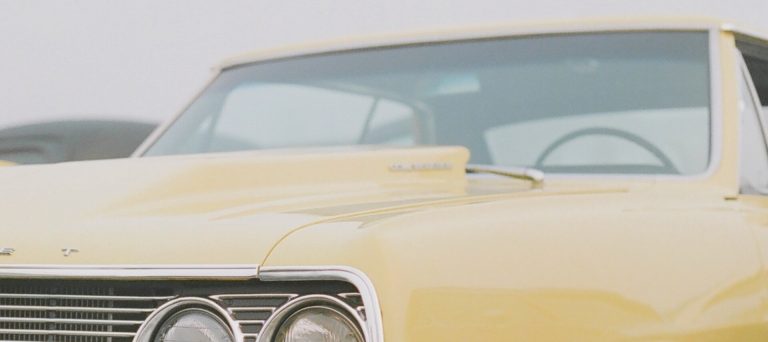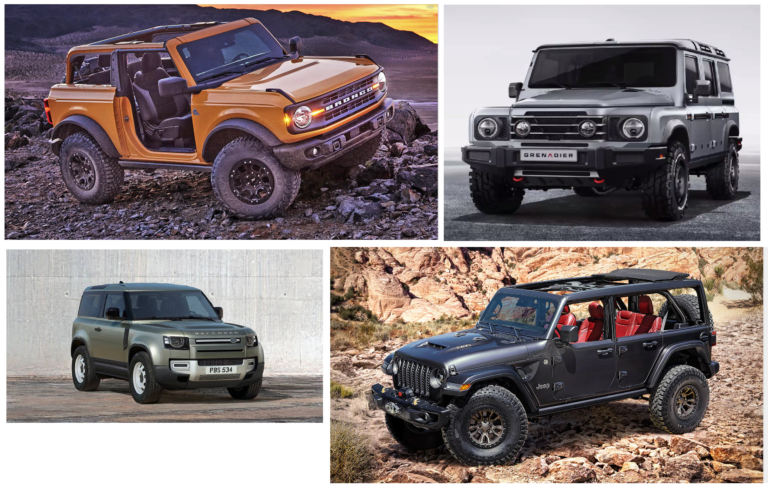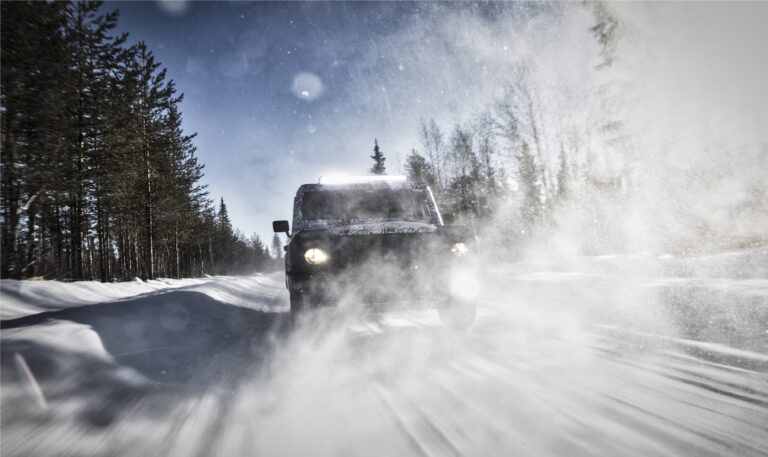This is one for the history books as we finally get our hands on a Chinese vehicle. It is not what you think it is, unless you have operated one of these before, in which case it is exactly what you think it is, and that is “a pleasant surprise”.
Now, by virtue of my job description, I am not one to approach a motor vehicle with strong preconceived notions, but I am only human and I do have expectations. That explains why I am harsh on some otherwise excellent cars and very accommodating on what my colleagues would consider unforgivable. There are not too many instances of the latter, and this Chinese pickup is one rare instance of falling in both categories.
I chose to be accommodating because my work demands objectivity despite the very high odds that giving a Chinese car a chance would be looked at askance by those who claim to know better (but really don’t). The reputation of Chinese products in general precedes these cars. Longevity is not one of their claims to fame, nor is quality or, in some cases, even legitimacy. Such is the disparaging they receive that some jokes border on callousness as they allude to certain deaths as due to the ephemeral nature of anything coming out of the Far East. This could be the first disposable car I have ever reviewed.
I also chose to be harsh on this rather excellent (explanation to follow) vehicle because like I said, sometimes legitimacy is in question. This is where my subjective side comes out: as a creative, I abhor plagiarism of any kind, and as far as China goes, “copyright infringement” is an expression that does not translate well into Mandarin or Cantonese.
They have got under the skin of many by replicating anything that takes their fancy, be it a Rolls-Royce Phantom saloon or a McLaren P1 children’s pedal-car or a World Heritage Site; yes, China went as far as “copying” an Austrian town, rebuilding it down to street sign level of accuracy and thus robbing it of the very uniqueness that made it special in the first place. That little underhanded act of neo-subterfuge left the Europeans seething and demanding blood (not literally) in retribution. At first glance, this Asian truck looks exactly like you’d imagine the result would be if someone described an Isuzu DMAX to a car designer over the phone. Being the shameless copycats they are, they should not expect any mercy from me.
The result of this dual-toned, yin-yang angst casting its shadow over this road test is that this is the most comprehensive list of observations I have ever made for a single vehicle.
EXTERIOR: WIN
Pros: The car is handsome; after all, it is a DMAX in a kimono (bad pun, I know). When decked out in bull-bars, sidesteps, roll-bar and sports wheels like my test vehicle was, it really is fetching. The ground clearance is excellent: tall enough not to scrape any underbelly essentials, but not so tall as to make it difficult to load, enter or handle passably.
Cons: Fail to opt for the makeup kit and the front of the car reveals itself as the nearly ghost-faced apparition that its predecessor was. The Chinese had to leave a homegrown design footprint on it, after all. Also, if you stare at it long enough, you might notice that some of the proportions seem a little off; but then again, you are not buying a commercial vehicle to park under a tree and try to make a watercolour painting out of it, are you?
INTERIOR: DRAW
Pros: The cabin is light and airy. All-round visibility is excellent from the generous glasshouse flanked by large mirrors. The fact that it is a pickup also helps; the open payload area means you can easily see a lot of what is going on around you. The radio has nice sound for a car at this price level and comes with USB and SD card slots for those of the new age. No cassette options here: what are you, a 19th Century fossil? Get with the times. This car has a fearsome air conditioning unit, and by fearsome I mean brutally effective.
Temperature ranges are selected via a rotary dial with no calibrations beyond the blue and red colour codes and given the speed with which it works, you might find yourself moving from an icy alpine snow environment to a steamy Swedish sauna and back in the space of a few seconds.
The immediacy with which it works is unlike anything I’ve seen before, and that includes Jaguars, Range Rovers and the like. The instrument cluster is clear and easy to read, the controls are intuitive and exactly where you expect them to be (read Japanese-style with lights on the right stalk and wipers on the left) and the seat and wheel adjustment (rake only, no reach) means you can find a comfortable position to be in.
Cons: You might find a comfortable position but that doesn’t necessarily mean you will be comfortable. The seats are a bit hard and you sit on them rather than in them. There is no power assistance for the windows, so Popeye’s forearms may be a requisite.
IRKSOME
This is especially irksome because to open and shut the passenger window when flying solo means you have to lean over to reach the opposite winder, which is both irritating and dangerous if you are on the move.
There are no power mirrors either: strong but accurate fingers deftly applied to the glass surface will do the trick. To reach the left mirror, you will have to pull over, park, get out of the car and… it really is a bother. Worst of all, the mirrors might be manually adjustable but their housings are rigid. They don’t retract. Cue an errant motorcycle or a naughty child breaking it off when you are not looking…
The cup-holders are useless. They have a diameter specifically chosen not to match any single existing drink container, there aren’t any spring-loaded retainer clips to your hold cups/bottles/flasks in place and they are buried under the AC controls, so a soda bottle like the one I tried to shoehorn into that cavity will sit at an awkward angle and dance around every time you hit a bump.
The cluster might be clear and easy to read but with the steering wheel at its highest position (which is where I like it), it might obscure the dials a bit on part lock.
*Note: En route to giving back the car, the wipers wouldn’t react at all. A rapidly darkening windscreen in inclement weather made me nervous to the point of opting for the default first step in troubleshooting an electrical problem: restart. Switching off the vehicle and back on again on the bypass while shuttling with neither brake servos nor power steering between 22-wheelers is an activity I don’t plan to repeat, but neither is driving with a muddy windscreen as transparent as the dealings at NYS and Afya House. Thankfully, the restart solved the problem and the back-and-forth swish of the wiper blades before my face has never felt more welcome.
DRIVING: WIN
Pros: The primary controls are finger-light and very direct, which makes this car easy to drive. The long travel clutch pedal with its high-biting point does take some getting used to, but once adapted, is as faultless as one can hope. The gear-shift action is direct (but notchy in third) and satisfyingly long in the throw, which should be pleasing to my small clique of commercial vehicle pundits. It almost feels like driving a lorry from the mid-’90s, and makes it easy for needless double-declutching just for the fun of it.
The throttle response is immediate, brake bite happens low in pedal travel but is positive enough not to cause panic. The engine is surprisingly smooth for what is: 1. A commercial vehicle and 2. Chinese; and with the windows shut, noise, vibration harshness (NVH) levels are at a premium. As with most other commercial vehicles, the ride is a trifle bouncy when unladen. This is a pleasing vehicle to drive.
Cons: Not so pleasing is the petrol-powered 2.4 litre Mitsubishi engine it is saddled with. I have not spoken highly of the L200 in recent times, and the L200 is where the Wingle gets its engine from.
The power plant lacks torque so much so that even when empty, you still need to rev it a bit hard to go up a slope, otherwise it will stall with a shudder. 200Nm is not a lot by commercial vehicle standards; it is the kind of torque I would expect from a Stage 1 tuned Honda Civic.
In low gears, the engine is a bit buzzy and revvy; it only settles down quietly from third gear onwards. They have had to design the transmission that way: very low first and second to compensate for the lack of initial torque, with taller third, fourth and fifth gears for quieter highway operation and good fuel economy.
The finger-light controls might at some points come off as a bit over-servoed. While this is a good thing in a commercial vehicle in which the driver will most likely spend endless hours, it does make for some overwrought actions: sometimes you steer too much, sometimes you brake too hard, sometimes you stomp the clutch too violently and yank the gear lever too roughly. Either that or my daily driver needs softening up a little.
CONSTRUCTION: WIN (PROBABLY?)
Pros: The sales guy who walked me through the car before handing over the keys said a lot of things, some of them not very accurate (this car does not, in fact, have a supercharger, though for a moment there I was about to consider drag racing anybody I came across after he said it did). He said the payload is longer than in all competing vehicles, but at second glance, I think not. I have seen a Hilux and a Ford Ranger, and those vehicles have soccer fields out back. I lost my tape measure, so I have no figures at my fingertips. The depth seemed just about standard. He also said that the frame is made from 6mm thick steel, as opposed to the industry standard of 4mm steel.
I have to take his word for it — and this robust construction means that one can get away with ferrying 1.5 tonnes, which is half as much again over the vehicle’s standard 1 -tonne rating — on a regular basis without the risk of bending the chassis. Sure you could, just not with that torqueless 4-cylinder Mitsubishi 4G64 engine. Perhaps it does need a supercharger after all, the available 136hp notwithstanding….
The cabin is also mostly plastic, with fabric appearing only on the seats. No leather – you don’t need it. Hosing it down after a filthy operation should be a breeze: all you need is soap and a jet stream of water.
Cons: None immediately come to mind. Those who mourn the death of rudimentary, basic, no-frills workhorses like the Land Rover Defender should take a look at this. It even comes with a manual transmission.
SUMMARY
So what do you think? Is this a worthy — if poorly spec’d — pickup, or is it a flimsy, parts-bin facsimile of obsolete Japanese trucks? Is it even poorly spec’d to begin with? Apart from the lack of power windows and mirrors which really are a prerequisite in any car, almost every other foible is forgivable. After all, the vehicle costs less than Sh2 million off the showroom floor.
Yes, at Sh1,995,000 without VAT, this is the cheapest, realistically usable 1-tonne pickup truck you will find in the market, unless Mobius lengthens their chassis and divests their car of the canvas hat it sports. That price hovers around halfway between zero and the competition, but is the Great Wall only half as good? It is better than that: it is almost as good as.
The Mitsubishi engine, weak though it might be, is still a Japanese engine in a country that worships Japanese cars, so what exactly, is wrong with that? The frame is half as thick again as normal frames go, meaning you can 1. Overload it and 2. Stop worrying about what the car will look like six months down the line: the two things most Kenyan entrepreneurs worry about whenever anything Chinese is under discussion.
RECOMMENDATION
There is a Euro-spec version of the Great Wall pickup. While our breadline version is called the Wingle (also sold in Australia, where they seem to like it), theirs is called the Steed and it comes with a lot more features, most important of which is 4WD. For now, all DT Dobie will sell you is a 2WD Wingle in either single-cab — the one I had — or double-cab (for about Sh200,000 more) iterations. I would prefer the double-cab for obvious reasons.
Also notably missing is a diesel engine, turbocharged. There is a good reason for this: DT Dobie tried it and the lack of power was shocking, which says something. Perhaps another Japanese engine is in order?
VERDICT: OUTRIGHT WIN
Would one buy one? Why not? It is dirt cheap, it is as good as anything else out there and there is the option of easy financing, depending on your credit rating– as high as 90 per cent via CFC Bank if they like the look of your face.
That means you will be paying a monthly installment of about Sh45,000 until long after the next general elections and for that you will have yourself a brand new, not-necessarily disposable pickup. If that doesn’t make business sense, I don’t know what does.
No more jokes about Chinese cars lasting only a few hours; if the Great Wall is good enough for Europe and Australia, it is good enough for us.





1 thought on “Review: Chinese Invasion 101 – Start With A Great Wall”
” if the Great Wall is good enough for Europe and Australia, it is good enough for us.”
What a review!😀
Comments are closed.